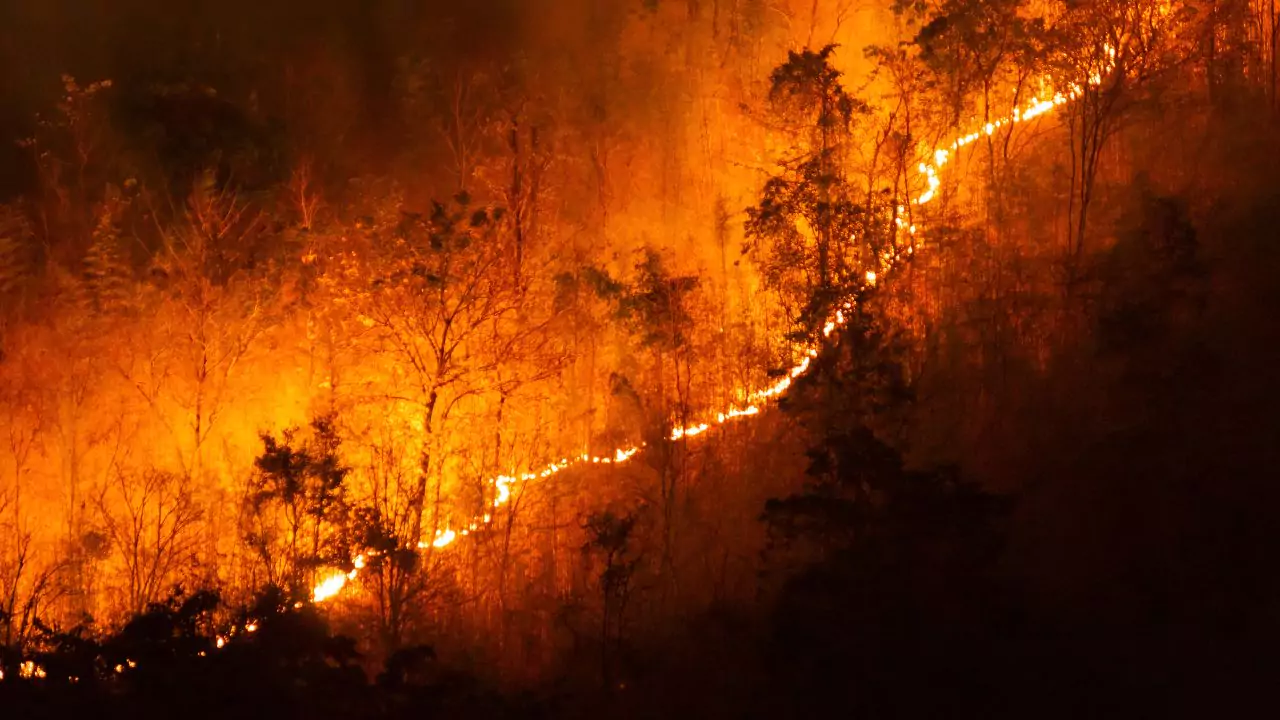Yes, house insurance typically covers damage to your home and belongings caused by wildfires. This includes damage caused by the fire itself, as well as damage caused by smoke, heat, and water used to extinguish the fire.
Understanding Wildfires and Insurance Coverage
Wildfires are uncontrolled fires that burn in natural or rural areas, such as forests, grasslands, or farms. They can be caused by natural factors, such as lightning, drought, or high winds, or by human factors, such as discarded cigarettes, unattended campfires, burning debris, malfunctioning equipment, or arson. Wildfires can spread quickly and unpredictably, posing a threat to lives, property, and the environment.
Insurance coverage for wildfires depends on several factors, such as the type of homeowners policy you have, the location of your home, the cause of the fire, and the extent of the damage. Different insurance companies may have different policies and terms regarding wildfire coverage, so it is important to read your policy carefully and ask your insurance agent or provider any questions you may have.
How to Find a Wildfire Insurance Policy?
If you live in an area that is at risk of wildfires, you may want to look for a homeowners insurance policy that specifically covers wildfire damage. You can use online tools, such as Forbes Advisor or Insurance.com, to compare different insurance companies and policies, and find the best rates and coverage for your needs. You can also contact your state insurance department or local fire department for information and advice on finding wildfire insurance in your area.
What is Typically Covered by Homeowners Insurance?
A standard homeowners insurance policy covers damage to your home and belongings resulting from a fire, including a wildfire. A homeowners policy usually consists of several types of coverage, such as:
Dwelling Coverage
This type of coverage helps cover your home and attached structures, such as a garage or deck. If your home is damaged by fire (or another covered peril), dwelling coverage may help pay for repairs or rebuilding.
Personal Property Coverage
This type of coverage helps cover your belongings, such as furniture, clothing, and electronics. If your personal property is damaged or destroyed by fire, personal property coverage may help pay to replace or repair them. Keep in mind that there may be limits on the amount of coverage for certain items, such as jewelry, art, or collectibles. You may want to consider purchasing additional coverage for these items if they are valuable or irreplaceable.
Additional Living Expenses Coverage
This type of coverage helps cover the cost of reasonable increased living expenses, such as renting a home, hotel bills, or food expenses if a fire leaves your home uninhabitable. Additional living expenses coverage may help pay for these costs until your home is repaired or rebuilt.
Exceptions and Limitations in Coverage
While homeowners insurance typically covers fire damage, there may be some exceptions and limitations in coverage, depending on your policy and situation. Some of these may include:
- High-risk fire zones: Some insurance companies may not offer or renew wildfire coverage in areas that are considered high-risk for fire events, such as California, Colorado, or Arizona. In these areas, you may have to pay higher premiums, accept lower coverage limits, or purchase a separate wildfire insurance policy from a specialty insurer or a state-run program, such as the California FAIR Plan.
- Intentional fire setting: If you or someone in your household intentionally sets fire to your home or property, your insurance company may deny your claim and cancel your policy. Intentional fire setting is considered a form of insurance fraud and a criminal offense and may result in legal consequences and penalties.
- Damage to vehicles: If your car or other vehicle is damaged by a wildfire, your homeowner’s insurance policy will not cover it. You will need to have comprehensive coverage on your auto insurance policy to cover fire damage to your vehicle. Comprehensive coverage is optional and may increase your auto insurance premium, but it may be worth it if you live in a fire-prone area.
Tips for Protecting Your Home and Finding Coverage
If you want to protect your home from wildfires and find the best coverage for your needs, here are some tips to follow:
- Preventative measures: You can take some steps to reduce the risk of wildfires and minimize the damage to your home and property. For example, you can use noncombustible materials for your siding, decking, and roofing, install fire-resistant windows and doors, clear flammable debris and vegetation from around your home, create a defensible space of at least 100 feet around your home, and follow local fire safety regulations and guidelines.
- Resources for finding insurance in wildfire-prone areas: If you have trouble finding or affording wildfire insurance in your area, you can use some resources to help you find coverage. For example, you can contact your state insurance department or local fire department for information and assistance, or visit websites such as the [National Association of Insurance Commissioners] or the [United Policyholders] for consumer education and advocacy.
- Services and resources offered by home insurance companies: Some home insurance companies may offer services and resources to help you prevent and recover from wildfires. For example, some companies may offer discounts or incentives for installing fire-resistant features or devices, such as sprinklers, smoke detectors, or fire extinguishers. Some companies may also offer wildfire response services, such as sending firefighters, water trucks, or helicopters to protect your home in the event of a fire. You can check with your insurance company or agent to see what services and resources they offer and how to access them.





